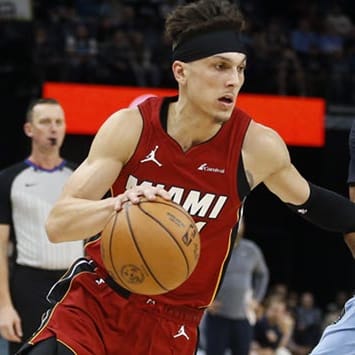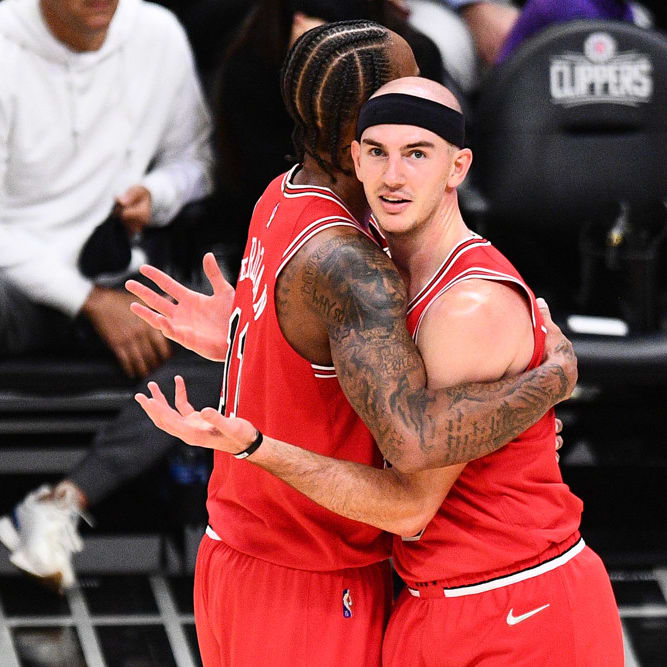This article is part of our Fantasy Basketball 101 series.
Dallas Mavericks owner Mark Cuban has stated that an NBA team with title aspirations is always "one sprained ankle away from not being champs."
Cuban's quote holds true for fantasy basketball, as well, as injuries can easily derail an owner's quest for league supremacy. While avoiding injuries entirely is nearly impossible, fantasy owners who can smoothly and effectively manage injuries when they inevitably occur are more likely to find late-season success.
Let's take a look at common injuries in the NBA and what to expect should you find your first-round pick in street clothes.
Sprains and Strains
These two categories make up a significant number of the injuries in the NBA. Although the terms are often used interchangeably, there are remarkable differences between a sprain and a strain.
A strain is an injury that occurs to a muscle and is routinely described as a "pulled muscle" or "torn muscle". A sprain is used to classify an injury that has occurred to a stabilizing ligament that connects bone to bone.
Medical personnel often assign grades to both sprains and strains based on the severity of the damage sustained. A minor -- or Grade I -- injury is marked by micro tearing of the affected structure but generally doesn't not drastically affect the function of the involved area.
A Grade II classification is utilized for a more moderate injury and is also known as a "partial tear." In these ailments, structural fibers of the injured ligament or muscle are damaged or torn.
A severe -- or Grade III -- injury is often season-altering or even season-ending, as the involved soft tissue ruptures or is completely torn. These injuries result in a loss of function and mechanical stability and often require surgical intervention.
Despite the common grading system, strains and sprains vary in their recovery time. A strain with a low-grade classification may be quicker to heal than a sprain with the same ranking because most muscle tissue receives a healthy amount of blood. Other factors that influence recovery time include severity, area of the body, age, and injury history. Let's parse out several noteworthy examples.
Ankle Sprains
During the 2016-17 NBA season, nearly 200 ankle sprains were reported league-wide with every team sustaining at least one.
In a normal -- or "lateral" -- ankle sprain, the ligaments located on the outside aspect of the ankle are damaged when the foot is forced inward, often after landing on an opponent or teammate's foot. A low-grade sprain may not force the individual to miss anytime while more moderate sprains can take weeks to improve
Furthermore, there is another type of ankle sprain that involves a completely different joint. A syndesmotic sprain -- or "high-ankle sprain -- occurs to the distal tibiofemoral joint, where the ends of the lower leg bones -- the tibia and fibula -- form the ankle mortise. Here, multiple ligaments, including a strong ligament known as the interosseous ligament, stretch across the joint to connect the two leg bones. A high ankle sprain involves unwarranted stretching and disruption of these ligaments. Treatment for these sprains is the same as a normal medial or lateral ankle sprains but can often take longer to heal.
Knee Sprains
The size and speed of the NBA athlete, coupled with the explosive demands of the sport, puts a great deal of stress on and through the knees. As a result, knee injuries are a common occurrence in the league.
The anterior cruciate ligament (ACL) is the most infamous stabilizing structure of the knee. It gained its notoriety thanks to players like Derrick Rose and Ricky Rubio, who have missed substantial time after tearing their ACL. Most ACL tears are treated surgically and can impact multiple seasons based on the timing of the injury. Suns guard Brandon Knight has already been ruled out for the year after tearing his ACL in July.
The lesser-known medial collateral ligament (MCL) is also routinely sprained in the NBA. It sits on the inner aspect of the knee and helps stabilize the joint during side to side motion. Unlike the ACL, even moderate sprains of the MCL can heal without a trip to the operating room. However, they still carry a lengthy recovery timeline with Grade 2 MCL sprains often sideling a player for six to eight weeks.
Lower Extremity Strains
As can be expected in a sport where players defy gravity and leap through the air, the muscles of the lower leg are susceptible to injury.
The hamstring muscle group plays a key role in running and acceleration. They slow the leg as it extends backwards and help initiate hip motion from a standstill position. Players attempting to play defense, transition back the opposite way, and attempting to dunk, all place a great degree of stress through these muscles.
If a hamstring strain occurs, the injured individual enters a tough-to-balance cycle that can easily lead to a nagging or chronic injury. Last season several players, including Jeremy Lin, Rodney Hood, and J.J. Barea, missed multiple stints with recurring hamstring problems.
Additionally, strains in the lower extremity can create muscle imbalances, increasing the likelihood of another leg muscle becoming strained. For example, following a hamstring strain, a player's calf and Achilles can become vulnerable to injury. While the injuries may have occurred at different times, it is likely the first injury disrupted the kinetic chain of his involved leg and contributed to the new injury.
For this reason, it's important to consider a player's injury history on draft day to avoid players with an elevated level of risk.
Concussions
The concussion rate in the NBA is drastically lower than in the NFL or NHL but the worrisome head injury does occur. Last season, 23 concussions for 22 players were recorded, including Bradley Beal and Al Horford. These brain injuries often vary widely from player to player with multiple possible symptoms.
However, once a player has been diagnosed with a concussion they are entered into a multi-faceted return to play protocol mandated by the NBA. The protocol includes a gradual return to play following completion of a neurocognitive exam. Once their scores return to a baseline established prior to the start of the season, players must remain asymptomatic at rest and with exertion.
A recurrence of any concussion-related symptoms at any point suspends the athlete's progression and forces them to restart the protocol from their previously passed level. Once the team's medical personnel has cleared the individual, the director of the NBA league's concussion program is consulted and decides if a player will return to play. This complex process rightfully requires time, and it's rare for a concussed player not to miss at least a game while two while recovering.











